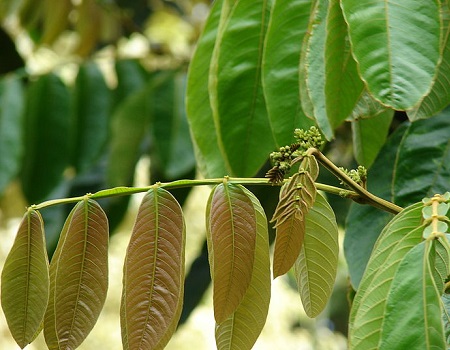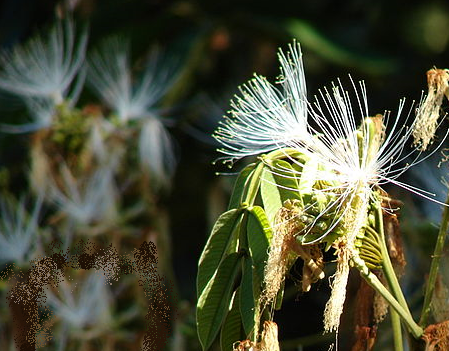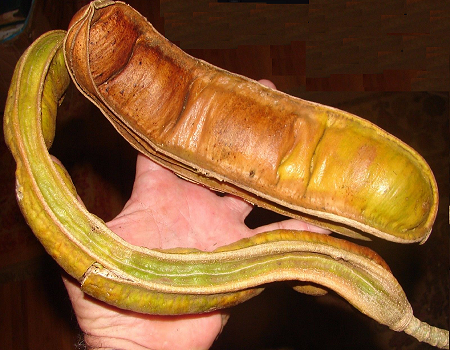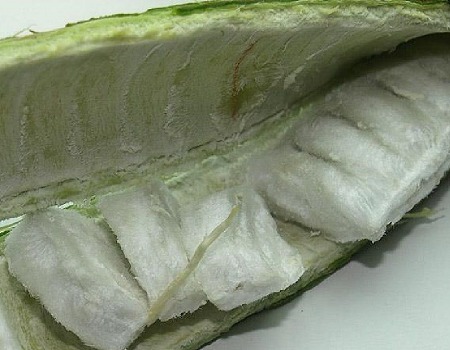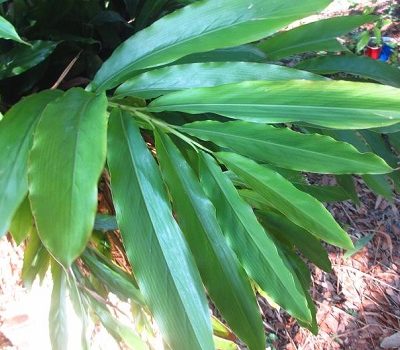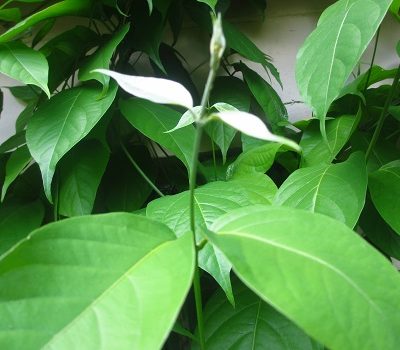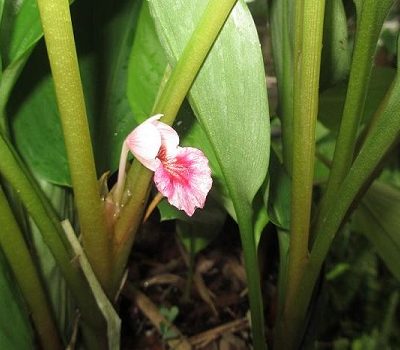Inga feuillei, named after Louis Feuillée, also called pacay or the ice-cream bean, is a fruit-tree in the Fabaceae family native to northwestern South America. It is a fast growing tree tht is often planted in its native range for the purpose of pollarding for firewood. Inga feuillei, as is the case with other trees in genus Inga, produce pods that contain an edible white pulp, that is delicious, and tastes like cotton candy.
One of the more interesting facts about this tree is that it has nitrogen fixing nodules in its roots. So this tree actually improves the soil it is growing in. It is for this reason that it is frequently grown as a shade crop for coffee trees in commercial coffee plantations.
Origin
South America
Family
Fabaceae
Binomial nomenclature
Inga feuillei
Common names
Pacay, Ice Cream Bean
Description
Inga feuillei is a medium to large sized tree up to 60 ft tall. Pubescent hairs with rusty color on young branchlets. Leaves have 3-5 pairs of oblong-elliptic leaflets, with a terminal leaflet. Inflorescences in spikes of white filaments resembling dandelion seed heads, followed by large flat bean pods filled with sweet floss like, edible material surrounding edible seeds.
Height
60′ tall.
Temperature/Zone
zone 10a, 38°F. Inga feuillei is more cold toilerant than Inga edulis, but it will begin to drop leaves below 40°F.
Light
Full sun.
Water
Keep them evenly hydrated. Like jaboticaba, these grow near water, so they like constant moisture.
Fertilizer
Inga feuillei does not need nitrogen due to its nitrogen fixing nodules on its roots. As a result, this tree thrives in poor soil, and doesn’t need much fertilizer.
Cultivation
Plant this tree in full sun. These grow quite fast. I’ve seen them go from being burned to the ground by cold winbter in Winter, only to be 9 feet tall by the following fall. As a result, they are not a very good choice for growing in containers. This tree is best suited to growing in the ground in the warmest parts of the country
Pests
I have not found any pests to be a problem for this plant in Florida.

